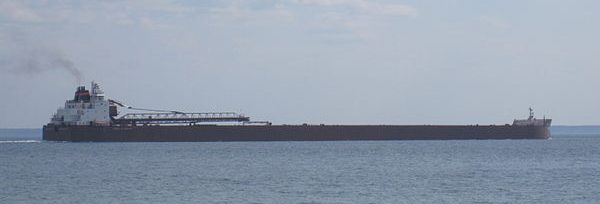Ever since invasive species started arriving in the ballast of lake freighters, GBA has been calling for tighter ballast regulations to protect the Great Lakes and Georgian Bay from the devastation that these invasive species can cause and have caused. When Canada joined the International Convention for the Control and Management of Ships’ Ballast Water and Sediments (the Convention) in 2010 this was a major step in the right direction. Since then GBA has been eagerly awaiting the tighter regulations and keeping an eye on progress. The June 2020 announcement that Transport Canada is finally moving forward with new ballast water regulations is therefore welcome news.

These new regulations will:
- give effect to the Convention in Canada and address Canada’s international obligations, including the protection of foreign environments, by repealing the existing regulations and replacing them with the new proposed Ballast Water Regulations, which will apply to Canadian vessels everywhere and all vessels in waters under Canadian jurisdiction;
- Incorporate by reference the Convention’s requirements, which includes imposing requirements based on the vessel’s length, its ballast water capacity, its date of construction, and its area of operation;
- reduce the risk to Canada’s environment and economy associated with the introduction and spread of aquatic invasive species released through the ballast water of foreign and domestic vessels;
- maximize compatibility with the differing and evolving United States ballast water regime; and
- mitigate, to the extent feasible, technical uncertainty associated with the Convention, notably in the Great Lakes–St. Lawrence River region.
In particular, vessels that operate internationally will be required to be in compliance with the Convention regime, which requires that vessels:
- have on board and implement an approved vessel-specific Ballast Water Management Plan;
- be surveyed and carry a Ballast Water Management Certificate;
- meet a performance standard that limits the number of organisms capable of reproducing in order to reduce the risk of aquatic species;
- record ballast water operations and maintain a Ballast Water Record Book on board;
- be subject to inspections in ports or offshore terminals to ensure compliance;
- flush otherwise empty ballast tanks with open ocean water in order to reduce the risk posed by any residual ballast water and sediments;
- exchange and flush ballast tanks in addition to meeting the performance standard when travelling to Canadian freshwater ports; and
- report on the provenance and management of ballast water discharged in Canada.
Full details of the new legislation as drafted in June, 2020 can be viewed here.
